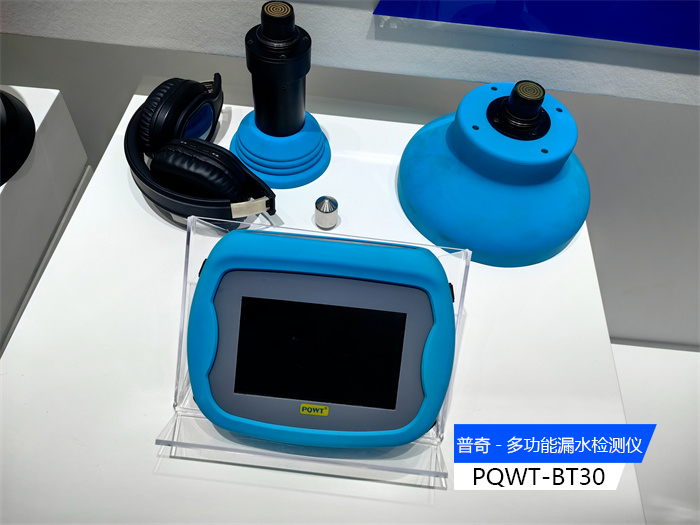With the continuous development of urban infrastructure, underground pipeline networks are becoming increasingly large and complex. In this context, the problem of pipeline leakage has become more and more prominent, which not only causes the waste of water resources, but also may lead to a variety of potential safety hazards. Therefore, timely and accurate detection and localization of pipeline leaks is particularly important. In this paper, we will focus on the technical principles and comprehensive applications of the widely used pqwt water detector.

First, the technical principle of pqwt water detector
1. Sound detection
Sound detection is one of the core technologies of pqwt water detector. When the pipeline leakage, water flow through the pore outflow, will produce different frequencies of "leakage noise". The frequency of this noise depends on the water pressure, the size and shape of the leak, the pipe material, and the data resolution of the landfill. pqwt water detector captures this leakage noise with a highly sensitive acoustic sensor, amplifies and filters it, and presents it to the inspector through a headset or on a display. Acoustic detection is more effective at night when the ambient noise is relatively low, which is conducive to capturing the faint sound of leaks.
2. Correlation meter technology
Correlator is another important technology for pqwt water detector. It determines the point of leakage based on the time difference between the sound of the leakage transmitted along the pipe flow to the separating probes. By calculating the time difference between the sound of a leak received by two or more probes, the location of the source (i.e. the leak) can be determined. The correlator technique has high localization accuracy and is suitable for leak detection over long distances and in complex pipeline networks.
Second, the comprehensive application of pqwt water detector
In practice, pqwt water detector usually needs to be used in conjunction with other detection equipment and means to achieve the best detection results. The following are several common comprehensive application:
1. Combined use of pqwt water detector and hearing leak stick
The listening stick is a simple leak detection device that determines whether there is a water leak by listening to the sound of water flowing in the pipe. Although its accuracy is relatively low, it can still be useful in certain situations. For example, in areas with low ambient noise or at night, the listening stick can be used as a complementary tool to the pqwt water detector to help inspectors quickly locate leaks.
2. pqwt water detector with correlation meter
For long distance and complex pipeline network leakage detection, it may be difficult to locate the leakage point by using pqwt water detector alone. In this case, the pqwt water detector can be used in conjunction with a correlator. First, the pqwt water detector's sound detection technology is used to conduct preliminary screening of the pipeline to determine the possible areas of leakage; then, the correlator technology is used to accurately locate the suspected leakage areas in order to improve the accuracy and efficiency of the detection.
3.Joint application of pqwt water detector and other detection technologies
With the development of science and technology, more and more new detection technologies continue to emerge, such as infrared thermal imaging technology, ultrasonic detection technology and so on. Each of these technologies has its own characteristics and can play an advantage in different occasions. Therefore, in practical application, pqwt water detector can be used jointly with these new detection technologies to achieve more comprehensive and accurate pipeline leakage detection.
Summary and Prospect
As one of the widely used pipeline leakage detection devices, pqwt water detector has a variety of technical principles such as sound detection and correlation meter. Through the comprehensive use of various detection equipment and means, it can realize the rapid and accurate detection of pipeline leakage. However, with the continuous development of science and technology, more advanced detection technologies may appear in the future. Therefore, we need to pay constant attention to the development of new technologies and actively explore their potential application in the field of pipeline leakage detection. At the same time, strengthening the training of relevant personnel and technical exchanges is also an important way to improve the level of detection.








